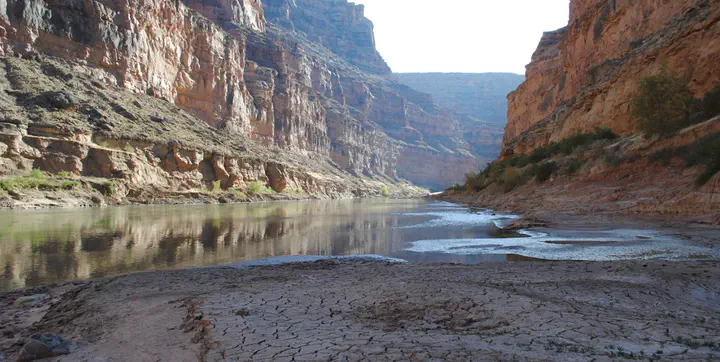Falling Reservoirs and River Recovery in a Changing Climate

Reservoirs are declining across the West in response to long-term drought and the overallocation of water, foreshadowing a scarcity of water that will likely be seen in other regions as climate warms. In the backwaters of those reservoirs, areas which have been inundated for decades are once again transitioning to river systems. I am interested in the timescales and processes by which reservoir sediment are evacuated and removed from formerly-inundated areas. Put simply, how long will it take for places that have been buried under reservoir sediment to re-emerge, and will those areas recover to their pre-reservoir eco-geomorphic form and function? These are questions that I’ve been exploring with colleagues at Utah State University and interested citizens as part of the Returning Rapids project. I’m using historic and current lidar and aerial photography, along with legacy and modern-day sonar surveys to track the response of reservoir backwaters to falling water levels in Lake Powell (UT) and Lake Mead (AZ/NV) on the Colorado River, and Fort Peck Reservoir on the Missouri River (MT).
I’m also interested in the lessons we can learn from reservoir declines, especially as they relate to management of these systems in a future that will be drier and where water becomes more scarce. Since the rate and pattern of water level decline in reservoirs is adjustable (consider a “slow and steady” decline in water level versus an “all at once” draining of the reservoir), I’m working on understanding how the way in which reservoirs decline might help or hinder the recovery of landscapes they inundate.
Ultimately, reservoir levels, and the potential recovery of upstream hydrologic and eco-geomorphic landscapes will be determined by strategies for water management across the American West. Along with collaborators from multiple federal agencies and universities, I’ve been working to develop new strategies for the management of water in the Colorado River Basin as the climate warms, populations grow, and existing water allocation laws are renegotiated. You can read our white paper on water management policies and paradigms for the Colorado River here, and learn about the potential future recovery of Lake Powell’s tributary canyons here.